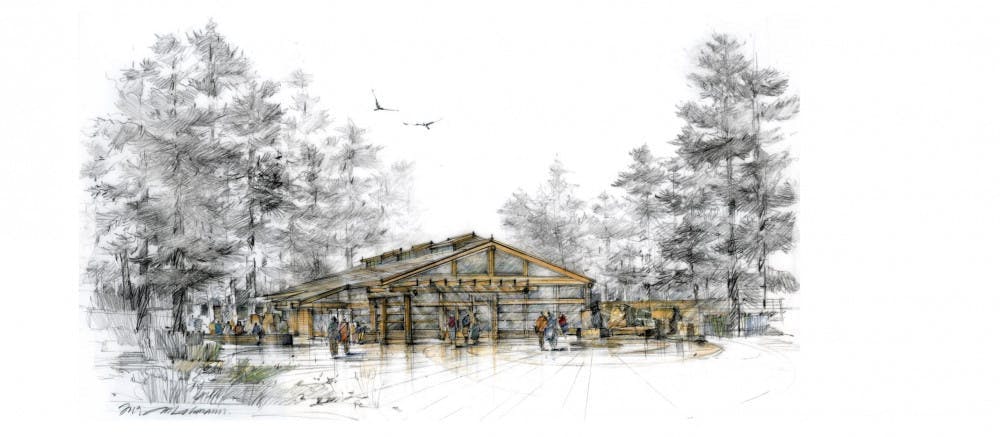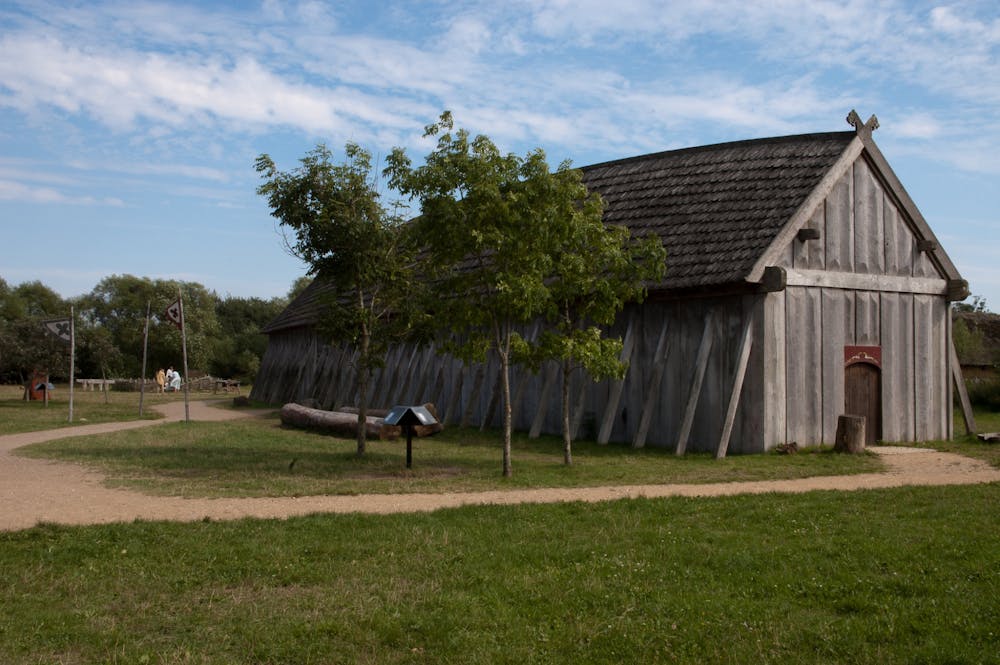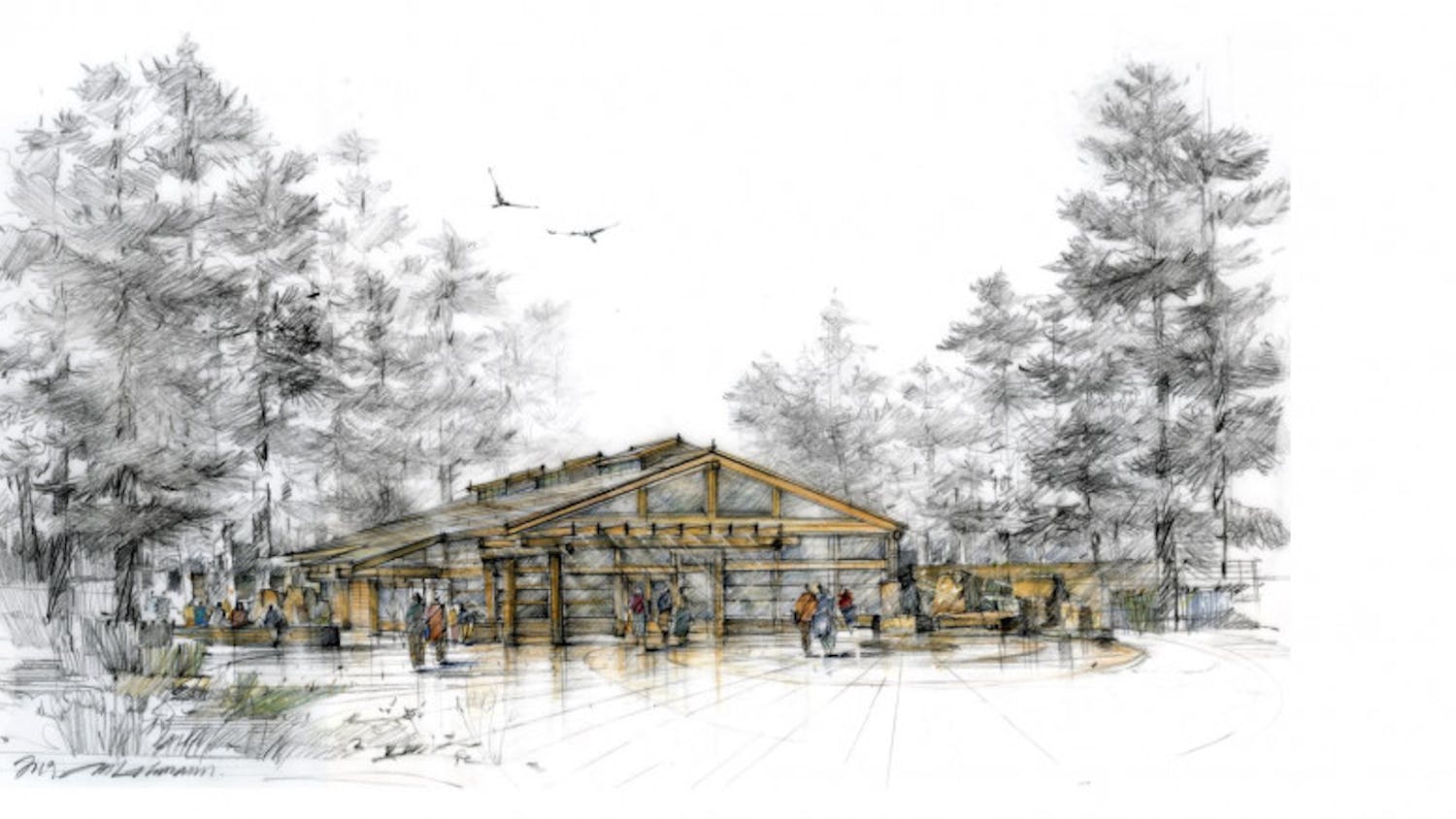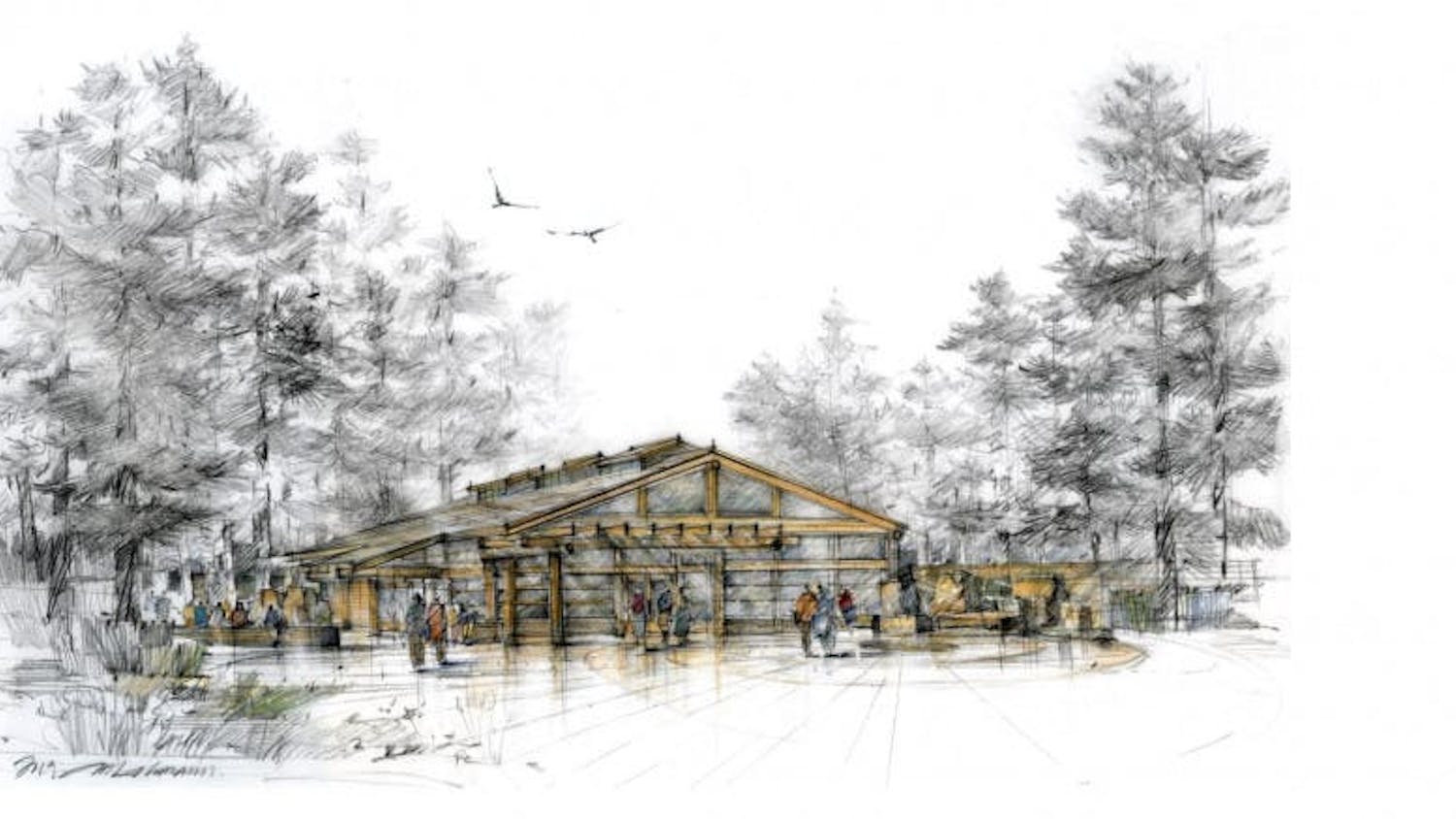In 1969, a 13-year-old girl from the Swinomish tribe of Northwest Washington visited Western Washington University for the first time. During her four-week visit, she met a flood of new faces from the Lummi Nation, Nooksack, Swinomish and Upper Skagit tribes while living in the dorms and attending classes.
She observed Native students at the university as they took part in social activities and made new connections. Even though she was only in junior high, she imagined herself in college and wondered if one day she would be the one running outreach programs.
Fifty-two years later, now working as the tribal liaison for Western, Laural Ballew regularly reflects on that experience as a formative moment. In her role, she works on building relationships with other tribal organizations and increasing Native student enrollment at Western.
Among her many goals, Ballew wants to focus on making sure Native students see themselves reflected in higher education.
“I see myself as a testament to that exposure,” Ballew said.
It’s an idea shared by Kylie Gemmell, a 2016 Western alum and former officer for Western’s Native American Student Union. As an officer in 2015, they were tasked with running the annual Pow Wow with the help of only two other students after others were pushed out of the university, as Gemmell puts it:
“You shift the language to ‘push out’ instead of ‘drop out’ because it’s not necessarily the students’ fault,” Gemmell said.
They said Native students faced issues including lack of staff support since existing staff were stretched thin; lack of representation in structures like the counseling center; and, according to Gemmell, misreported numbers of Native students, as they said non-Native students misreported their ethnicities to get scholarships.
Without proper support, Gemmell and their peers spent the day scrambling to organize the gathering where tribes mingled, dancers competed with their tribal regalia and booths lined Sam Carver Gymnasium.
Gemmell was one of three students to write the NASU’s 2016 request letter to Western’s current President Sabah Randhawa, former President Bruce Shepard and the Board of Trustees. The letter featured five requests for the university to meet that, in its own words, would provide solutions to historic and structural problems Native students face.
Current NASU members, officers and club advisors could not be reached to comment on today’s conditions for Native students or the club’s 2016 request letter.
Gemmell said Western used videos of the Pow Wow as promotional material on its website to show its diversity, despite not contributing any funding to the event.
That grievance wasn’t forgotten, and in 2016, full funding for the Annual Spring Pow Wow became just one of the NASU’s requests. The hiring of Ballew as the full-time tribal liaison, tribal enrollment verification for university admissions and Native-specific scholarships, greater communication between tribal and Western governments and a longhouse on campus made up the rest of the requests.
When Ballew was hired, the NASU’s five requests became her mission, but Western’s Tribal Relations Department consists of only one person — Ballew.
Five years after the letter was written, four of those requests have been met, and the fifth commences now that Western’s longhouse funding has been secured. Gov. Jay Inslee’s 2021-23 capital budget allocated $4.5 million to Western for the construction.
Western predicts in the longhouse proposal that the building will “increase the enrollment of American Indian and Alaska Native students by at least 10 percent,” but an exploration of other comparable Pacific Northwest universities with longhouses suggests it’s not that simple.

An illustration of the proposed longhouse that will be built in the Sehome Arboretum behind Western Washington University. The secured funding for the longhouse fulfills the final request made by the Native American Student Union to Western in 2016. // Illustration courtesy of Laural Ballew
Tribal relations in action
This longhouse advancement comes at a time when Native student enrollment at Western is on a steady decline. While Native students comprised 2.34% of the student population in 2011, they make up only 1.88% in 2020, according to Western’s Office of Institutional Effectiveness.
This decline mirrors national trends.
In fall 2019, there were 16.6 million undergraduate students enrolled nationally — 116,400, or about 0.7%, of whom were American Indian and Alaska Native students, according to the National Center for Education Statistics. Between 2009 and 2019, American Indian and Alaska Native enrollment decreased by 38% while overall undergraduate enrollment decreased by only 5%, according to the NCES.
In comparison, national fall enrollment in tribal colleges and universities increased about 18.35%, from 13,680 to 16,190, between 2000 and 2018, according to the NCES. The data did not include enrollment numbers from 2019.
Along with declining enrollment, Native students at Western typically see lower-than-average graduation rates. On average, 67.4% of all Western students graduate within five years, but for Native students, that percentage drops to 61%, according to Western’s Office of Institutional Effectiveness.
The same trend can be seen when comparing the six-year graduation rates, since 72.8% of Western students graduate in six years compared to 71% of Native students, according to Western’s Office of Institutional Effectiveness.
Nationally, Native students see the same pattern. While the average national six-year graduation rate for undergraduates attending a public four-year university was 59%, that figure dropped to 36% for Native students, according to NCES data on students who entered higher education in 2010.
Western proposed the Coast Salish style longhouse for the first time as a part of the 2021-23 budget. Accompanying the budget, Assistant Director of Capital Budget Brian Ross published a project proposal outlining the goals of the project, including increasing Native student enrollment.
The longhouse is also intended to act as a house of healing “by acknowledging the past trauma and suffering of Indigenous people and all ethnic groups, as well as the current grief and suffering,” according to the proposal.
Western submitted a capital budget for 2021-23 to be approved by the Washington State Legislature. Within this budget, the university requested bonds for nine capital projects. The Coast Salish Longhouse was proposed to receive $4.95 million in bonds and was awarded $4.5 million.
The missing $400,000 will be generated through fundraising, although the specific fundraisers have not been decided, Ballew said.
Once the funding is met, Western’s longhouse proposal predicts the presence of a longhouse on campus will reverse the declining Native student enrollment numbers, but trends at other universities reveal otherwise.
“[The longhouse] drives home the point that Native cultures are current, vibrant and dynamic … but [change] can’t happen in a vacuum,” said Laura VerMeulen, the managing director of the House of Welcome longhouse at Evergreen State College.
According to the proposal, while Native residents are 3.4% of the population in Whatcom County, where Western resides, Native students comprise only 1.9% of Western’s student body. This was why Western created the Tribal Relations Department, according to the proposal.
Now, Western stresses the importance of giving Native students a place to gather.
“While the Tribal Relations Department has been very successful in their mission and outreach, not having a cultural center for meetings, workshops, educational seminars, and cultural gatherings has hindered their ability to fulfill their mission,” according to the proposal.
The proposal did not state any concrete measures of the department’s success thus far, but Gemmell said she felt Ballew’s hiring was a major step in Western’s tribal relations efforts.
“I met [Ballew] at a conference that I was attending for school,” Gemmell said. “I didn’t know who she was at first, but she pulled out a paper copy of the letter and was like, ‘This! I carry this around and I will until everything’s met.’”
Ballew said she has carried the letter for two years.
“When the NASU students wrote that letter, that was historical,” Ballew said. “And I held on to that. And that will be part of our recorded history.”
Measuring up
Evergreen State College first opened its longhouse, s'gʷi gʷi ʔ altxʷ or House of Welcome, in 1995. The first of its kind in Washington state, House of Welcome now functions as a meeting space, a support center for Native students and an art gallery.
“It’s a community-based center. We engage with the community. Both with the tribal community and the community at large,” said Amber De Villers, the student success coordinator for the House of Welcome.
Student demographic data for the college, which is collected every fall, extends from 2004 to the present. In 2009, the college added a new race reporting tool for students by allowing them to select more than one race category, a practice not shared by other peer institutions like Oregon State University, the University of Washington or Western.
When using the original demographic data, in the past 17 years, Evergreen has seen significant fluctuations in the percentage of undergraduate enrolled Native students.
Overall, the college has seen a .2% decrease since fall 2004, but percentages have been as low as 2% and as high as 4.8%, according to Evergreen’s student demographic data.
Fall-to-fall quarter retention rates for Native students have also lagged 11% behind the college average of 64%, according to a 2020 report from Evergreen. In comparison, Western’s average first-year retention rate of 85% is the same for Native students, according to the Office of Institutional Effectiveness.
UW constructed a longhouse on its campus in 2015. Since building it, the percentage of undergraduate enrolled Native students has not significantly increased. There have been slight fluctuations, but the percentage has stayed between 1.2%-1.4% since 2010, according to their student statistics.
OSU’s longhouse originated in the 1970s and was established by student activists on campus. The longhouse was always student-centered, said Luhui Whitebear, the director of the Native American Longhouse, Eena Haws, at OSU. But when the new longhouse replaced it in 2013, they brought in professional staff including Whitebear.
“Being that kind of central hub in place for students to be themselves and plan events that are important to them culturally, and connect with other students who learn from each other, is still the main goal,” Whitebear said.
In fact, OSU has seen a 1.05% decrease — from 1.7% to .65% — in undergraduate Native student fall enrollment between 1997 and 2019, according to enrollment and demographic reports from the university.
“I think the main thing is that piece of it being that unique relationship, and that you can’t just make assumptions that what works for students of color, in general, are going to work for Native students,” Whitebear said.
Nolan Cabrera, an associate professor at the University of Arizona who co-authored a 2016 study about Native students’ sense of belonging at college, explained the limited benefits of longhouse construction.
“It’s wonderful that these issues are being addressed … but it’s not going to be enough with a one-off issue,” Cabrera said.
More than just a building
Researchers who study Native student support at the university level highlighted the need for support and representation beyond a building. They said colleges need to continually work at supporting and listening to Native students if they expect to see any improvement.
In the minds of professors like Cabrera, longhouses are more of a “jumpstart” to Native student support than the ultimate solution.
When universities are preparing to build these structures, Cabrera said, “Start from the perspective that institutions of higher education are already at a massive debt to the Indigenous populations whose land they serve on.”
Western’s Bellingham campus resides on the ancestral homelands of the Coast Salish Peoples, according to its land acknowledgment statement.
The longtime erasure of Native culture and people in the U.S. and at universities has only contributed to that debt, Cabrera said. Repayment looks like including Native voices in the building process and educating students and staff about the cultural importance of the building, he said.
Above all, “Make sure progress doesn’t become an excuse for complacency,” Cabrera said.
Iris PrettyPaint is a member of the Blackfeet/Crow Nation and a published academic researcher of Indigenous issues like cultural resilience and Native students in higher education for over three decades; she stressed retention as a marker of success for universities.
Rather than looking at departures, PrettyPaint said to look at data on students’ resistance at universities — their ability to stay there despite issues they may face. Specifically, she said to look at what is working for those students, then build on it.
PrettyPaint worked with higher education institutions to develop a tool called the Family Education Model to increase the retention of Native students. The students explained to PrettyPaint during her research that they want to see themselves reflected in their institutions.
“In our culture, a sense of belonging is everything,” PrettyPaint said.
The first step in the model, PrettyPaint said, is to identify what cultural activities are in the region and bring them to campus. The second is helping students with life skills like decision-making and problem-solving through workshops.
Going into higher education, students leave their communities, where their support is. Universities need strategies to bring Native students’ families to campus, she said.
In her research, PrettyPaint mentions the importance of an expectation of success, which is achieved by people in students’ lives communicating high expectations to them so they feel confident and hopeful.
“I did that with my son,” Ballew said of having a vision for Native youth’s future. “I have always had that plan. I always knew he was going to college. And I said that from the day he was born.”
Ballew said it’s important to mentor young students, and that she visualizes a program to bring them to the campus to meet other Native students.
While Whitebear noted the importance of having space and faculty dedicated to Native students, she also emphasized the role cultural acceptance can play in Native students' higher education experience.
For OSU to improve their tribal relations, she recommended hiring a tribal point person to identify tribes’ needs for the education of their students.
“[This would] strengthen those relationships with the tribes themselves, because those are unique relationships,” Whitebear said.
Looking to the future
The consensus among researchers like Cabrera and PrettyPaint, students like Gemmell and staff from OSU, UW and Evergreen is this: Longhouses alone aren’t the solution to declining Native student enrollment, retention and graduation rates.
“It’s a beautiful first step, but that’s exactly what it is, a first step,” Cabrera said.
His 2016 study with Arizona State University researchers Eliza Yellow Bird and Amanda Tachine used interviews with 24 Native college students and found that universities needed to actively validate and incorporate Native culture to better support these students.
Along with constructing physical recognition of Native culture, Cabrera emphasized the need for long-term systemic change — not just bursts of advocacy.
“All too often, there is this question: ‘When can I stop thinking about this?’ When your students stop thinking about it,” Cabrera said.
Despite graduating from Western five years ago, the NASU requests are still top of mind for Gemmell.
They are currently pursuing their doctorate at OSU in Women, Gender and Sexuality Studies while working as a graduate assistant at OSU’s longhouse. As Western prepares to plan and construct its own, Gemmell wants the university to focus on better educating all staff about Native history.
“I know for a lot of us in our classes we would become the teachers — we’d become the expert on Native things because we’re the one Native student in the class,” Gemmell said.
Gemmell also hopes Western will work to fully staff the longhouse and incorporate local tribes in the planning process.
“It has the funding to be built, but how will it be supported once it’s there?” Gemmell asked.
Long-term staffing and resource support were at the forefront of VerMeulen’s mind, too.
“The resources have to be there to make sure the work and impact that Native students are hoping to make get fulfilled,” VerMeulen said. Without them, students and staff are left unequipped to get the work done.
For Evergreen, that support has meant creating a Native Student Success Coordinator position and hosting galleries that support Native artists, among other things. UW has focused on creating a welcoming space to share ideas for not only Native students, faculty and staff, but also others from various cultures and communities.
Within its student focus groups, OSU found the importance of having Native faculty for the students to connect with, Whitebear said.
“An understanding of those cultural practices that help students stay connected to who they are and help keep them centered is really important,” Whitebear said.
Ballew said a longhouse would be a key piece in Western’s Tribal Relations.
“My ancestors have gone through so much,” Ballew said. “We’ve been through a lot, but we’re still here. If any lesson can come out of this, [it’s] having one longhouse as a resource where all of Western can come and we can share that knowledge and share our pain, and understand, we have lived this, we have survived it.”
Sharing that feeling with the rest of the community will be even better, Ballew said.






